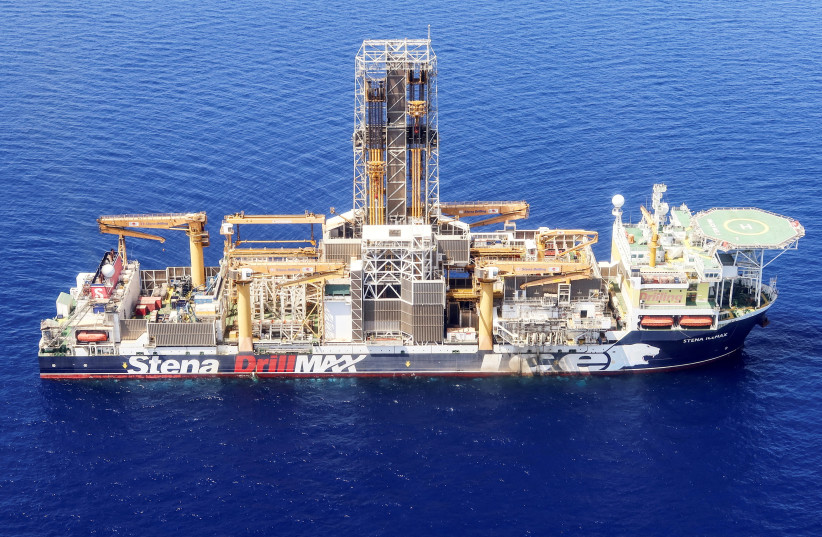Hezbollah has displayed awesome power “in the sky of the disputed maritime area,” according to Iranian media. Iran’s Tasnim News Agency, which is close to the Islamic Revolutionary Guard Corps and thus reflects the regime, has continued bragging about Hezbollah’s use of drones on Saturday to try to threaten Israel’s economic offshore zone. Israel downed three of them.
It now increasingly looks like this propaganda ploy was all designed not necessarily to cause much destruction, but rather, so that Hezbollah could publish doctored and fake videos claiming to be from the drones and also so that Iran could pretend it had done something against Israel.
The context of the Saturday attack was that Iran has been threatening the Jewish state for months now as tensions have been rising. Hezbollah has also threatened Israel due to a maritime dispute that the US is trying to solve between Israel and Lebanon. Taken together, this gives motivation to Iran and Hezbollah to do something.
Iran and Hezbollah — better together
The terrorist group has the means – the drones – to carry out an attack. And it had the opportunity on Saturday in the wake of Syria blaming Israel for airstrikes in Tartus.

The whole point is that Hezbollah operationalized drones, but it didn’t use a large number of them. Iran has done this before with a kind of “drip, drip” of drone threats since 2018. But Tehran doesn’t unveil the full drone and missile power it has. The Islamic Republic has done things differently when attacking Erbil, Asad base in Iraq, the UAE, Abqaiq in Saudi Arabia and other sites in the kingdom.
So Iran and Hezbollah prefer bragging rights in the wake of the drone threat. Iran’s media say the drones “penetrated” and “carried strategic messages that the Zionists themselves admit.” Hezbollah said the drones were only doing surveillance and that they “performed the mission correctly and delivered the necessary messages.”
Hezbollah claims to be creating “deterrence” with the drones and creating an “equation.” The goal here is to show it has asymmetric ways to attack.
“This deterrence is not only limited to protecting Lebanon’s marine resources against the aggression of the occupying regime; it is also in the context of dealing with Israeli threats against other resistance groups and Palestinians,” Tasnim reported.
The threat of Hezbollah
Hezbollah says its “air force” capabilities are established. “While most of the Zionists’ attention was initially focused on Hezbollah’s missile capabilities, now the drones of the Lebanese resistance have created a new concern for the occupying regime,” the report said.
This is a big deal. Clearly, Hezbollah and Iran are now seeking to unveil the power of Hezbollah’s drones.
IRANIAN MEDIA said the drones sent a message to “the Americans and Israelis by flying its [Hezbollah] drones over its field of action, which has a dangerous content for the Zionist regime and its plans in the sea borders of Lebanon.”
Hezbollah and Iran again slammed US envoy Amos Hochstein, who has been involved in negotiations regarding the maritime issue. This is not the first time Hezbollah has slammed Hochstein. It has used antisemitic language in the past against him and accuses him of working with Israel.
“While Israel is trying to pretend that its [gas] field, where this regime has been drilling and exploring energy, is not part of the disputed area… by sending its drones to the field, Hezbollah emphasized that this field is not out of the equation and is considered part of Lebanon’s rights in the territorial waters of this country,” the report said.
The terrorist group said it used several types of unarmed drones to fly into the disputed area and that it knows well “the positions where the Israeli air-defense systems are located.”
The overall point is that Iranian media are boasting that a new “equation” now exists. Hezbollah is trying to lift the veil on a new naval threat. It boasts of “highly skilled” naval operations and special forces.
“We know that Hezbollah’s capabilities are much more important than what was demonstrated by the flight of these drones, and in fact, the main purpose of this drone operation was to deliver messages to Israel, not exclusively to damage its facilities,” the report said.
Israeli experts have expressed concern about Hezbollah’s threats, the Iranian report said. Hezbollah used a missile during the 2006 war to damage an Israeli ship, it said.
The point that the article, and Iran and Hezbollah, in general, are making is that the Lebanese terrorist group has a serious threat targeting Israel that it can unveil at sea. This may be mostly bragging, but the messaging is important. Hezbollah wants to show it can “deter” Israel, and the goal here is, in a sense, to prevent war, rather than start a conflict.
At least for now, Hezbollah and Iran prefer these bragging rights to actually doing anything that causes major damage and could result in an Israeli response.
